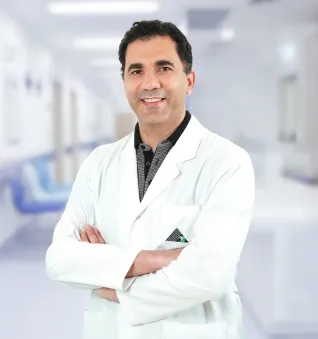Alo Yeditepe
Alo Yeditepe
Ingrown Hair Is Not Just an Adult Problem
Ingrown hair, which is generally thought of as an adult problem, can also occur in children. Pediatric Surgery Specialist Assoc. Prof. Dr. Şafak Karaçay pointed out that this problem now affects children due to reasons such as sedentary life and sitting for a long time.
Pilonidal sinus, known as ingrown hair, is a problem that occurs when the hair in the coccyx (Sacrum-Coccyx) region grows into the skin as a result of sweating and sitting too much, making a nest for itself under the skin. Although it is known to affect adults in general, it has been observed that its frequency has increased in the young population close to adolescence, especially in recent years.
Yeditepe University Kozyatağı Hospital Pediatric Surgery Specialist Assoc. Prof. Dr. Şafak Karaçay attributed this change to the lifestyle. Obesity and inactivity are the most important risk factors for the emergence of this infection, which seriously affects the quality of life of the person. However, it is more common in children whose first-degree relatives have had surgery due to ingrown hairs. This shows the influence of genetic factors.
It May Cause Pain and Fever
Personal hygiene is as important as much as the risk factors mentioned in the formation of ingrown hairs. Assoc. Prof. Dr. Şafak Karaçay said, “Ingrown hair first manifests itself with abscess and discharge. Failure to intervene in the abscess early can cause severe pain and fever. When a specialist is consulted with these symptoms, physical examination and patient history are sufficient for diagnosis. No imaging method is required. Stating that ingrown hairs can be seen not only in the coccyx but also in different parts of the body, Assoc. Prof. Dr. Şafak Karaçay emphasized that complaints about ingrown hairs can be encountered in the armpits, around the belly button, and even on the neck when the beard starts to grow.”
Untreated Ingrown Hair Can Lead to Other Diseases
Ingrown hair treatment must be done. If left untreated, it gradually enlarges the inner cavity in the coccyx, making surgical intervention more difficult. Although surgical intervention is performed at this stage, the risk of recurrence increases afterward. When diagnosed in the early period, the treatment is easier, and the children can return to their normal lives faster.
Although the incidence in males is 3 times higher than in females in adults, there is no significant proportional difference in children under the age of 15.
Early Diagnosis Accelerates Treatment and Recovery
Yeditepe University Hospital Pediatric Surgery Specialist Assoc. Prof. Dr. Şafak Karaçay, who explained that the method to be applied when planning the treatment of ingrown hairs depends on whether the case is detected early or late, gave the following information about the treatment: “Treatment of acute ingrown hair is done with surgical and medical methods. In early-detected cases, evacuation of the abscess and cleaning of the infected area is the first choice, this procedure is still not a definitive treatment, and the problem recurs in some of the cases. In chronic and recurrent ingrown hairs, the definitive treatment of the disease is the surgical removal of the sinus canal. During this process, it is very important to clean and remove all the problematic tissue and to move the suture line outside the midline. The most important factor affecting the success of both medical and surgical procedures is early diagnosis and treatment. In patients detected very early, it is sufficient to ensure hygiene, remove hair from the area and observe from time to time in terms of infection.”
Press Coverage: : aksam.com | sabah.com | cnnturk.com | haberler.com
About
Faculty and Year of Graduation:
Marmara University Faculty of Medicine (English), 1999
”
See Also
- Kidney Reflux Should Be Suspected in Children with Urinary Tract Infection
- Poop and Urine Incontinence in Children Can be a Sign of Serious Disorders
- Attention to the Genetic and Nutritional Factor: Five Out of Every 100 Children Have a Kidney Stone Problem
- Hernias in Children Should Be Intervented Without Wasting Time
- Does Environmental Pollution Cause an Increase in the Cases of the Hypospadias?
Alo Yeditepe




